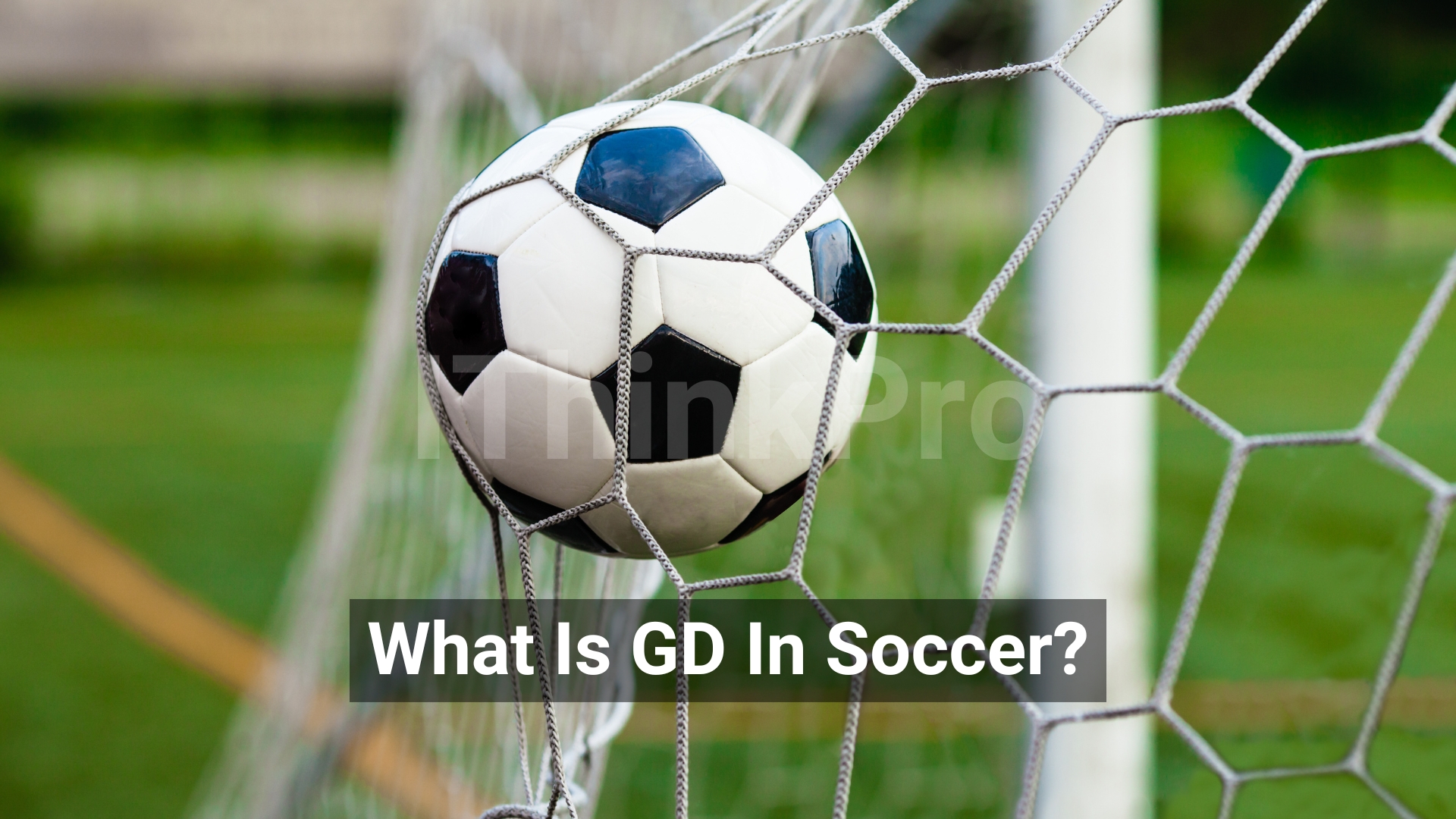Introduction
Hello Champ!
Soccer fans often encounter the term “GD” while following their favorite leagues, but its meaning may not be immediately clear. Understanding GD is crucial, as it can significantly impact a team’s standing in the league.
GD, or Goal Difference, is a key metric used to rank teams with the same points in a league. It is the difference between goals scored and goals conceded, and it can determine a team’s position on the table.
In this article, we’ll dive deep into what is GD in soccer? exploring how it works, why it matters, and how it influences the dynamics of the beautiful game.
Understanding the Basics: What Is GD in Soccer?
Definition of Goal Difference (GD) in Soccer
Goal Difference (GD) is a fundamental concept in soccer that determines a team’s position in league standings when teams are tied on points. It’s the numerical difference between the goals a team has scored and the goals they have conceded. For instance, if a team scores 30 goals and concedes 20, their GD is +10. Conversely, if they concede more goals than they score, the GD becomes negative, such as -5. This statistic provides a quick snapshot of a team’s overall performance, reflecting both offensive strength and defensive solidity. GD is often a critical factor in determining the final league standings, especially in closely contested leagues where multiple teams may end the season with the same number of points.
The Formula for Calculating GD in Soccer
Calculating Goal Difference is straightforward. The formula is:
GD = Goals Scored – Goals Conceded
This means that every goal a team scores improves their GD, while every goal they concede diminishes it. For example, if a team plays a match and wins 3-1, their GD for that match is +2. This result is then added to their cumulative GD for the season. On the other hand, if they lose 0-2, their GD decreases by 2. The cumulative GD is what ultimately impacts the league standings, particularly in situations where teams have equal points. A higher GD can propel a team above their rivals, making it a crucial factor in the race for titles, European qualifications, or relegation battles.
The Role of GD in League Standings
In most soccer leagues, teams are first ranked by the number of points they accumulate throughout the season. However, when two or more teams have the same number of points, GD is used as the tiebreaker. This system ensures that teams with a more attacking approach or solid defense are rewarded. GD can be especially decisive towards the end of the season when teams are battling for the championship, European spots, or to avoid relegation. A superior GD can give a team the edge, securing a higher position on the table even if they share the same points with another team. For instance, in the 2011-2012 Premier League season, Manchester City won the title over Manchester United due to a superior GD, despite both teams finishing with the same points.
Historical Context: What Is GD in Soccer and How Has It Evolved?
The Early Days of Soccer Scoring Systems
In the early days of soccer, league standings were determined purely by points, without considering the nuances of goal differences. This often led to situations where teams with vastly different performances could end up with the same number of points, making it difficult to determine a fair ranking. The absence of a standardized method to break ties based on performance metrics like goal difference sometimes resulted in controversial outcomes, where teams with weaker overall performances finished higher in the standings.
The Introduction of GD in League Competitions
The introduction of Goal Difference as a standard tiebreaker in league competitions revolutionized the way soccer standings were calculated. This change, adopted by most major leagues during the mid-20th century, aimed to reward teams for both scoring goals and maintaining a strong defense. The concept of GD provided a more balanced and fair approach to ranking teams, ensuring that the final league positions more accurately reflected the overall performance of the teams throughout the season. Over time, GD became an essential part of the soccer lexicon, and its significance in determining league outcomes has only grown.
Notable Moments in Soccer History Where GD Played a Crucial Role
Throughout soccer history, there have been several instances where Goal Difference played a decisive role in determining league champions, relegation, or qualification for major tournaments. One of the most famous examples is the 1989 English First Division, where Arsenal won the league title over Liverpool on GD after both teams finished the season with the same number of points. Arsenal’s 2-0 victory at Anfield in the final match of the season secured their triumph by the narrowest of margins. Similarly, in the 2010-2011 Bundesliga season, Borussia Dortmund won the title thanks to a superior GD, edging out Bayer Leverkusen who finished with the same points but a lower GD.
GD in Different Competitions: What Is GD in Soccer and How Is It Applied?
GD in Domestic Leagues
In domestic leagues worldwide, GD is universally applied as a tiebreaker when teams finish with the same points. Leagues such as the Premier League, La Liga, Serie A, and the Bundesliga all use GD to determine the final standings. This approach ensures a level playing field, rewarding teams that maintain consistency in both attack and defense throughout the season. GD often becomes a focal point towards the end of the season when every goal counts, making matches more thrilling for fans and more challenging for teams.
GD in International Tournaments
In international tournaments like the FIFA World Cup and UEFA European Championship, GD plays a crucial role during the group stages. Teams in the same group compete for the top spots, and when points are equal, GD becomes the deciding factor for advancement to the knockout rounds. For example, during the 2018 FIFA World Cup, Japan advanced to the Round of 16 over Senegal based on the Fair Play tiebreaker, which came into play after their GD and goals scored were identical. Although this scenario highlighted another tiebreaker, it emphasized the importance of GD in the initial sorting of teams.
Differences in GD Rules Across Competitions
While the concept of GD is widely used, its application can vary slightly across different competitions. In some leagues, head-to-head results between tied teams are considered before GD, while in others, GD is the first criterion. Additionally, some tournaments may include other tiebreakers such as goals scored or Fair Play points. Understanding these differences is crucial for teams and fans alike, as the nuances in rules can significantly impact the final standings and the outcomes of competitions.
The Strategic Impact: What Is GD in Soccer and Why Does It Matter?
Managing GD to Secure League Position
Teams often strategize around GD to secure their league positions, especially in the latter stages of a season. A positive GD not only boosts a team’s standing but also serves as a buffer in close races. Coaches may adopt more aggressive tactics in games where goal-scoring opportunities are abundant or opt for a defensive approach to protect a favorable GD. Managing GD effectively can be the difference between winning a league, qualifying for European competitions, or avoiding relegation.
The Psychological Impact of GD on Teams and Players
The importance of GD can also have a psychological impact on teams and players. A strong GD can instill confidence, while a poor GD might add pressure, especially in crucial matches. Teams aware of their GD advantage may play more conservatively, knowing that they can afford to draw rather than win. Conversely, teams with a negative GD may feel compelled to push for goals, which can lead to more open and unpredictable games. The psychological battle over GD is often as intense as the physical one on the pitch.
GD and GoalScoring Tactics
GD influences goal-scoring tactics, particularly in scenarios where teams need to improve their standing. Coaches may instruct their players to be more aggressive and focus on attacking to increase their GD. In some cases, a team might prioritize increasing their GD over merely securing a win, leading to high-scoring games. This strategic use of GD emphasizes its importance in the overall tactical approach to a season, where every goal scored or conceded has long-term implications.
Challenges and Criticisms: What Is GD in Soccer and Are There Any Drawbacks?
The Limitations of GD as a Tiebreaker
While GD is a widely accepted method for breaking ties, it is not without its limitations. Critics argue that it can sometimes unfairly favor teams that achieve a few high-scoring victories against weaker opponents rather than consistent performances against stronger teams. In such cases, a team with a higher GD might finish above a more consistent team, raising questions about the fairness of the system. Additionally, GD does not account for the context of the goals, such as whether they were scored during a dominant performance or in a lopsided match.
Alternatives to GD for Determining Standings
Given the limitations of GD, some have proposed alternative methods for determining league standings. One such alternative is the head-to-head record, which considers the results of matches between the tied teams. Another suggestion is to use a weighted GD system that takes into account the strength of the opposition. While these alternatives offer different approaches to ranking teams, they also come with their own set of challenges and complexities. The ongoing debate over the best method to determine standings reflects the evolving nature of soccer and the quest for fairness in competition.
The Debate on GD and Fairness in Soccer Competitions
The fairness of using GD as a tiebreaker has been a topic of debate among soccer enthusiasts and analysts. Some argue that GD can distort the true reflection of a team’s performance, particularly in leagues with significant disparities between the top and bottom teams. In such cases, teams that have the opportunity to play against weaker opponents multiple times might end up with a significantly better GD, skewing the standings. Others believe that GD is a fair measure, as it encourages teams to play both offensively and defensively. The debate continues, with no perfect solution in sight, but GD remains a central component of soccer competitions.
Future Trends: What Is GD in Soccer and How Might It Change?
Technological Advances and Their Impact on GD
As technology continues to advance, its impact on soccer, including GD, is becoming increasingly significant. Video Assistant Referee (VAR) technology, goal-line technology, and advanced analytics are all influencing how goals are scored and measured. These technologies ensure that goals are accurately recorded, which directly affects GD. As these tools become more sophisticated, they may lead to more accurate and fair assessments of GD, potentially reducing the controversies surrounding its use.
Proposals for Modifying GD Rules in Soccer
There have been several proposals to modify the rules surrounding GD in soccer to address its limitations. Some suggest introducing a more nuanced system that considers the quality of the opposition or the context of the goals. Others propose changes to how GD is calculated, such as weighting goals scored in more difficult matches higher than those in easier ones. While these ideas are still in the discussion phase, they reflect the ongoing evolution of the sport and the desire to create a fairer competition structure.
The Role of GD in Emerging Soccer Markets
As soccer continues to grow in emerging markets, the concept of GD is also gaining importance in these regions. Leagues in countries with rapidly developing soccer infrastructures are adopting GD as a standard tiebreaker, mirroring the practices of established leagues. The role of GD in these markets may evolve differently, influenced by local preferences and the specific challenges faced by teams in these regions. As soccer becomes more global, the application and interpretation of GD will likely continue to adapt to the changing landscape of the sport.
Conclusion
In conclusion, Goal Difference (GD) is more than just a number—it’s a crucial factor that can determine a team’s fate in league standings. From understanding its basic formula to its historical significance, GD plays a vital role in shaping the outcomes of competitions. Its application across different leagues and tournaments highlights its importance, while its strategic impact on teams underscores why it matters. Despite some criticisms and challenges, GD remains a key component of the beautiful game. As soccer continues to evolve, so too might the role of GD, influenced by technological advancements and emerging trends.
Explore our website for more helpful information about soccer and other sports-related topics.
FAQs
Q1. What does GD stand for in soccer?
GD stands for Goal Difference. It’s calculated by subtracting the number of goals conceded by a team from the number of goals they have scored.
Q2. How is GD used in league standings?
GD is used as a tiebreaker in league standings when teams have the same number of points. A higher GD ranks a team higher on the table.
Q3. Can a team win a league with a lower GD?
Yes, a team can win a league with a lower GD if they accumulate more points. GD is only used to break ties in points.
Q4. What happens if GD is the same for two teams?
If GD is the same, other tiebreakers, like goals scored or head-to-head records, are used to determine the teams’ rankings.
Q5. Has GD ever decided on a major tournament?
Yes, GD has played a crucial role in deciding league titles and tournament qualifications, such as in the 2011-2012 Premier League where Manchester City won on GD.











